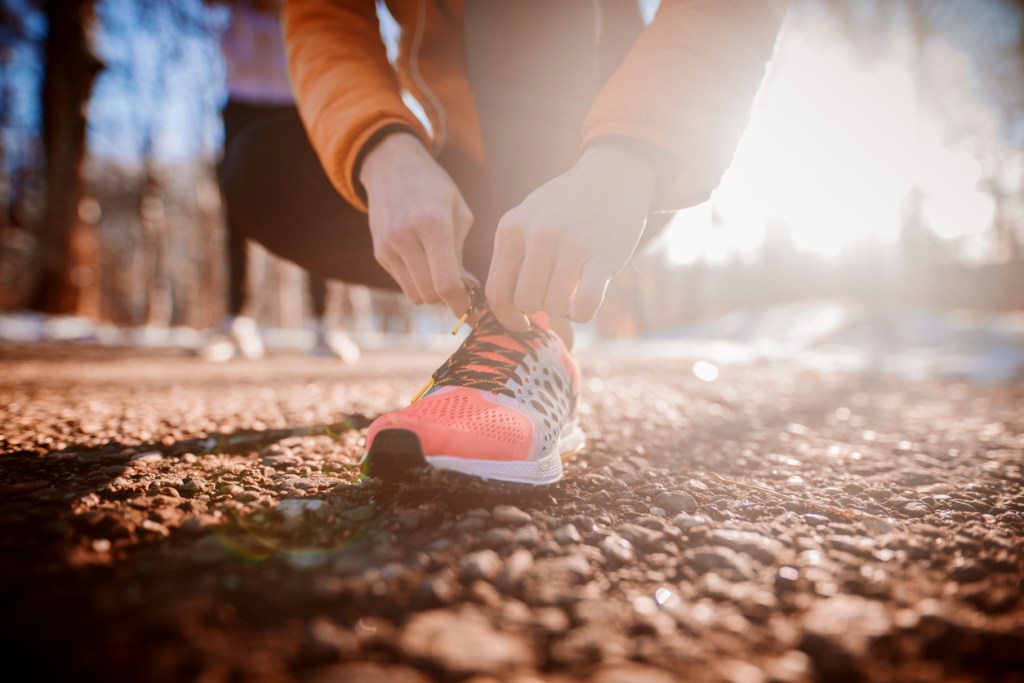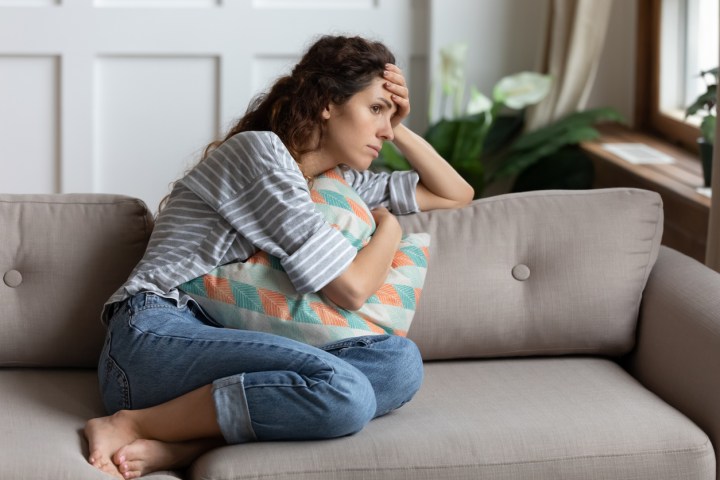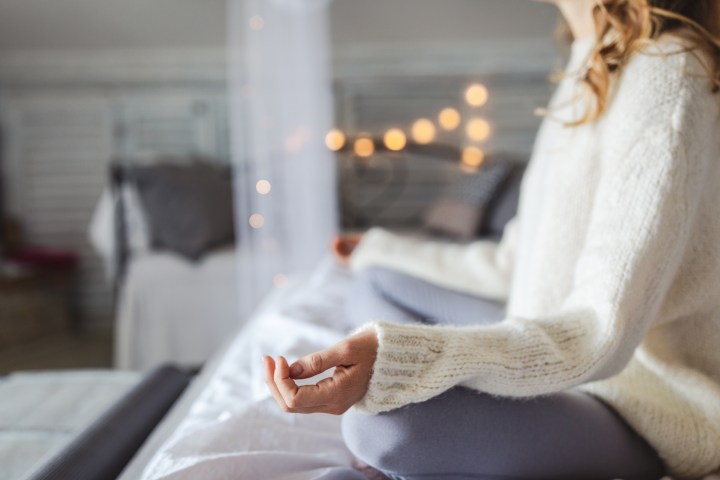How to start exercising

With the new year comes newfound motivation to improve our health and wellbeing. If done right, introducing exercise into your routine can be completely life changing. When you start exercising, within ten minutes, your body is on your side and making it easier for you to get fit. Your heart rate increases, boosting the supply of blood to your brain, making you more alert, blocking pain signals and increasing the feelgood endorphins rushing through your system.
For 72 hours after exercise, your metabolic rate is raised, helping you to burn calories. After a week, studies show, positive physiological and psychological changes are happening. Self- confidence lifts while depression lessens. After a month of regular, sensible exercise – I’m not talking marathons – you can expect to see good changes, such as improved productivity (you have a spring in your step), a reduction in sick days and ailments, and you’ll feel happier across all areas of your life.
Walk, don’t run!
As with all major life changes – even the healthy ones – we need to practise due diligence, so instead of blindly following a trend, test if it really is good for you. With any new regime, don’t run before you can walk. And perhaps never run – perhaps just focus on walking.
A few years ago, both my brothers ran the London Marathon, raising money for very worthy causes and boosting their mental and physical health no end. Inspired, I dug out my trainers and started to jog a little, a few times a week. The psychological lift I got from it was amazing – I felt powerful and lighter, but sadly my knees didn’t agree. One blew up like a balloon and the other wobbled and creaked like a dilapidated rocking chair. I followed all the correct advice: warming up before and stretching after, buying the correct trainers and, yes, even running socks, and not pushing myself.
Still I had no joy, so instead I embraced the simple delights of walking – or hiking, as the Hollywood crowd like to call it – and I have been happy to see benefits and a calorie burn very similar to my hobbling runs. Yes, to get a similar effect to a 30-minute run now takes me a chunkier hour, but I’ve accepted my legit limitations. And a study of inactive women who began low- impact exercise for just 75 minutes per week showed that they improved their fitness levels significantly over those in the test group who continued doing nothing.
If you run without damaging yourself, brilliant. If you can’t, switch it up and walk the walk. There are many reasons we should edit more brisk walking into our lives:
- It’s super- social with no huffing and puffing, just good conversation if you choose to partner up with someone. Call it quality time with your mum, your daughter, your friend who needs to talk about something serious, or your colleague with a hangover. Look for self- guided nature walks in local gardens or historic houses and ask neighbours if they’d be interested in starting a walking group.
- It’s free and doesn’t require any special equipment or time frame – it can be done at any time of day, in any season.
- It’s a more efficient exercise than we give it credit for. Just 30 minutes of walking per day increases muscle power, endurance and cardiovascular fitness, reduces excess body fat, strengthens bones, boosts balance and reduces your chance of developing conditions such as osteoporosis and heart disease.
- Walking won’t produce the serious injuries associated with more vigorous fitness regimes. It is a weightbearing exercise (that is, you carry your own weight) so it increases your cardiovascular and lung fitness, but it’s unlikely that you’ll twist a nerve, pull a muscle or tear a ligament.
- To get the benefits, walk at a speed that means you’re still be able to talk, but not sing! Not everyone loves wearing a pedometer but as a rule follower who loves ticking off achievements, I’ll wear one when I’m feeling unmotivated – to give me a confidence upswing when I hit my 10,000 steps. The number might be arbitrary, but it focuses my attention in the right direction.
- When you’re really walking the walk, add appropriate hand weights, go for longer, try more hills or speed up.
Strokes of luck: why we should edit more swimming into our lives
Swimming is the best thing to ever crawl into my marriage. Impressed by a sprightly, 85-year-old neighbour, my husband asked how he always looked so good and seemed so calm. ‘I swim,’ he revealed – and that was that. Now, every morning at 5am, whatever the weather, my husband slips out of bed and heads to our local pool to swim a mile, his middle-age crisis, weird stuff and stress sinking to the bottom, never to be seen again. He’s never had an injury, and is noticeably nicer for adding it to his routine.
Swimming is the ideal way to exercise for all fitness levels and ages because it is gentle on joints, gives your heart and lungs a great aerobic workout, and the water resistance builds muscle and lowers blood pressure. You can burn the most calories doing fast crawl or butterfly stroke, but any stroke will offer a good, all-round body workout. Swimming in warm water has been proven to ease stiffness and pain and increase flexibility by reducing the load on joints, which is specifically useful for pregnant women, the overweight or those with arthritis.
Hydrotherapy, as swimming or floating in water is known, also has a calming effect on the mind; the weightlessness of water offering a physical and mental distraction from the weight of life’s worries. The breathing patterns that you fall into during a swim regulate brain waves, which also quieten the interior chatter that leads to anxiety.
Swimming in the sea has its own name, it’s that special: thalassotherapy (a word first used by the god of all things good for us, Hippocrates, no less). Ocean water is rich in minerals including sodium, chloride, sulphate, calcium and magnesium – all helpful healers of skin conditions such as psoriasis and eczema. Ocean swimming is also known to reduce the symptoms of hay fever and respiratory issues. One reason suggested is that the saline reduces inflammation in the nose and throat. Seawater is also brimming with microorganisms that produce antibiotic and antibacterial immunity boosters in humans, so, let’s ride this wellness wave, shall we?







